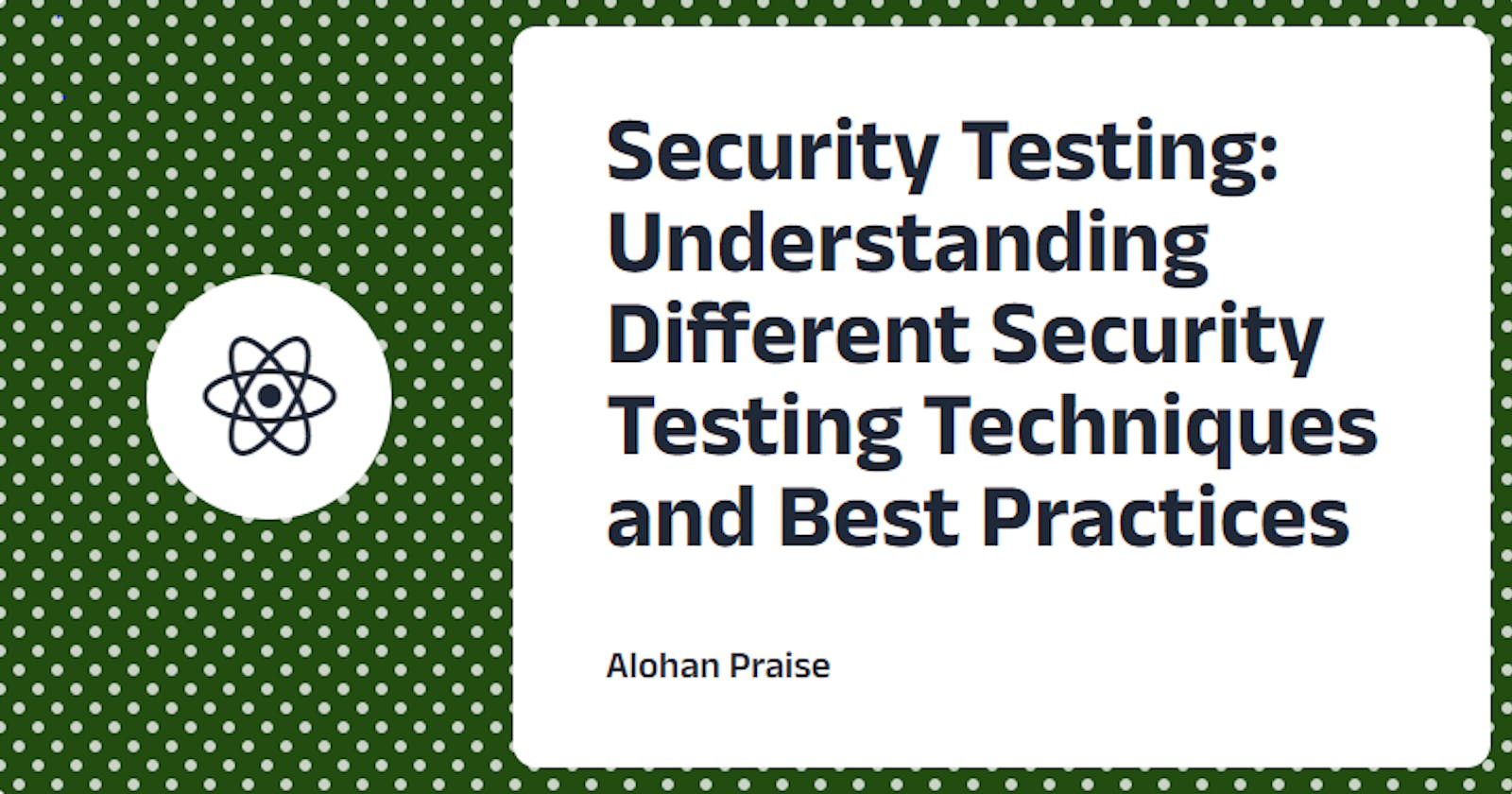Security Testing: Understanding Different Security Testing Techniques and Best Practices
In today's digital world, ensuring the security of software applications and systems has become a critical aspect of software development. Security testing plays a vital role in identifying vulnerabilities, potential risks, and weaknesses in software systems, helping organizations protect their sensitive data and maintain user trust.
In this blog post, we’ll explore various security testing techniques and discuss best practices to help software quality assurance testers ensure robust security in their applications.
Threat Modeling:
Threat modeling is a security testing technique that focuses on identifying potential threats and risks in the early stages of software development. Its purpose is to analyze the system's architecture, design, and functionality to determine potential vulnerabilities. The approach involves prioritizing security efforts based on the threat model to allocate resources effectively. The output of threat modeling is documentation of identified threats and a roadmap for addressing them.
Best practices:
Involve security experts and developers in the threat modeling process.
Update threat models as the application evolves.
Prioritize and address high-risk areas based on the threat model.
Vulnerability Assessment:
Vulnerability assessment involves identifying and documenting potential vulnerabilities in an application or system. This testing technique utilizes automated tools and manual analysis to scan for common security issues, misconfigurations, or weak points that attackers could exploit
Best practices:
Use a combination of automated vulnerability scanning tools and manual analysis.
Stay updated with the latest security vulnerabilities and patches.
Regularly retest for vulnerabilities to ensure continuous security improvement.
Penetration Testing:
Penetration testing, often known as ethical hacking, involves simulating real-world attacks on an application or system to uncover vulnerabilities and assess the effectiveness of existing security controls. Penetration testers attempt to exploit identified weaknesses, providing valuable insights into potential risks and the impact of a successful attack.
Best practices:
Clearly define the scope and objectives of the penetration test.
Obtain proper authorization and permissions before conducting the test.
Document and report all identified vulnerabilities with detailed steps for reproducing them.
Security Code Review:
Security code review is a manual examination of an application's source code to identify security flaws and vulnerabilities. It involves analyzing the code line by line, looking for insecure coding practices, potential backdoors, or exploitable logic.
Best practices:
Use automated static code analysis tools to assist in the review process.
Follow secure coding practices and industry-standard guidelines.
Involve experienced security professionals in performing code reviews.
Security Training and Awareness:
Ensuring security is a shared responsibility, involving the entire development team. Security training and awareness programs help educate developers, testers, and other stakeholders about secure coding practices, common vulnerabilities, and best practices.
Best practices:
Conduct regular security training sessions for the development team.
Promote a security-first mindset throughout the development lifecycle.
Encourage open communication channels for reporting security concerns.
Conclusion:
Security testing is crucial for building resilient software applications in an increasingly vulnerable digital landscape.
By employing a combination of threat modeling, vulnerability assessment, penetration testing, security code review, and training programs, organizations can identify and address security risks effectively.
Embracing these techniques and best practices not only helps protect sensitive data but also instills confidence in users, reinforcing the reliability and integrity of software systems.
Remember, proactive security measures are essential to stay one step ahead of potential threats. Adopting these techniques and best practices helps protect sensitive data and ensures the integrity and reliability of software systems in an increasingly connected world.
To gain practical knowledge in Quality assurance engineering, you should visit The UnbugQA Academy to register. This is the only place where you get the most flexible and practical training in QA engineering in just 3 months.
